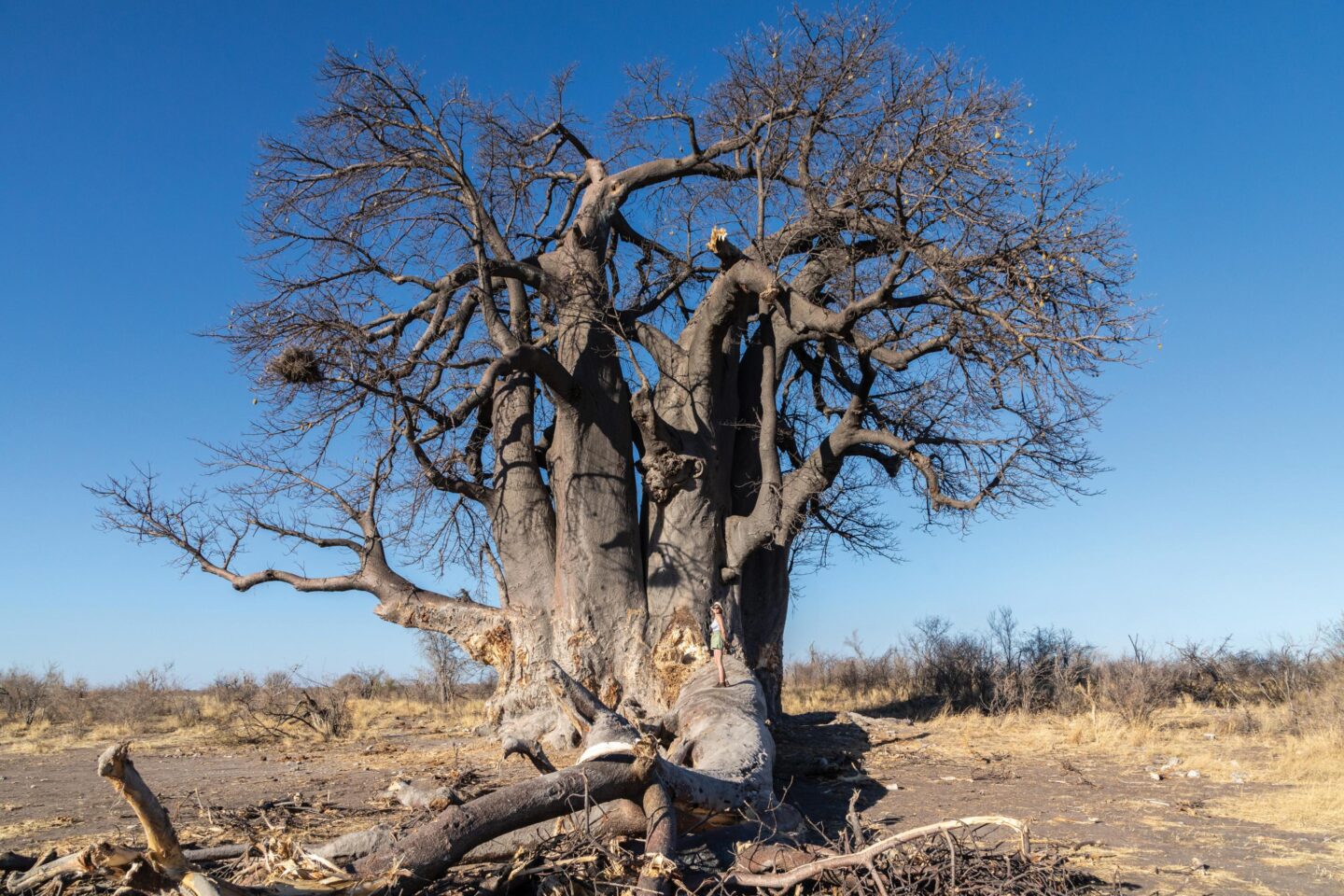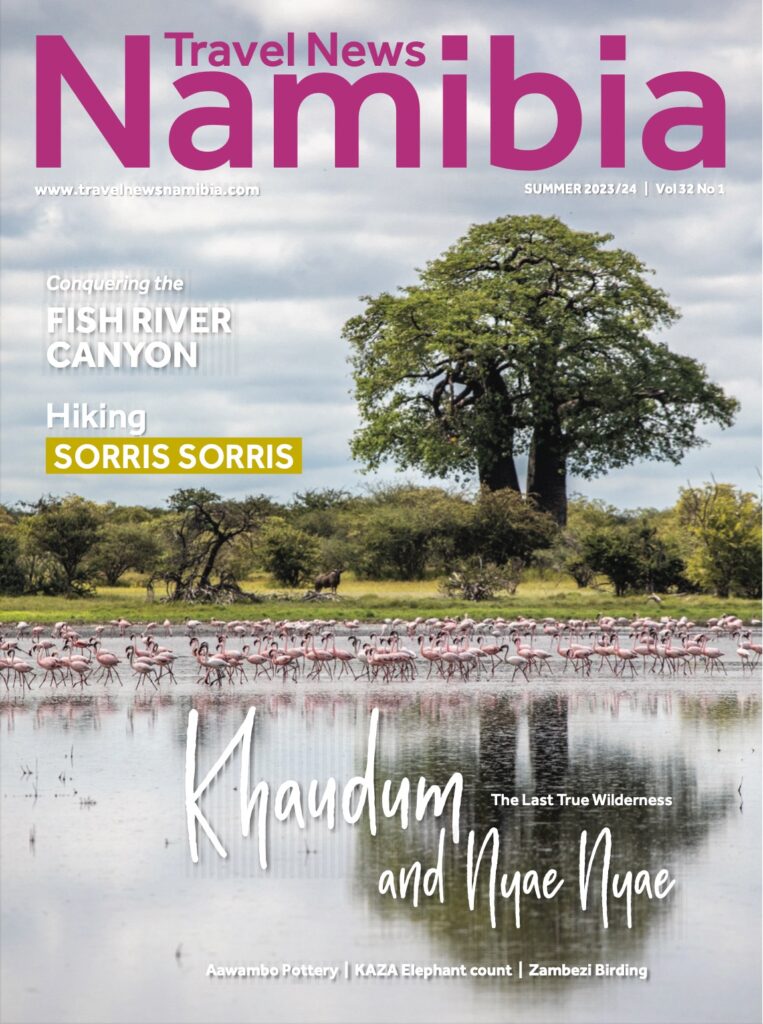

AT HOME UNDER A BUSHMANLAND BAOBAB
The Pangolin Conservation and Research Foundation’s new base camp
Bumpy roads often lead to the best destinations, especially when accompanied by dense bushveld all around and the sight of a baobab in the distance, protruding far above the treeline. This particular jeep track veers deep into the Nyae Nyae conservancy of Namibia’s northeast and leads us to a crescent koppie – in the nape of its bend a quintessential Bushmanland baobab – for the inauguration of the research base camp of the Pangolin Conservation and Research Foundation (PCRF).
Text Le Roux van Schalkwyk | Photographs Le Roux van Schalkwyk
From the Summer 2023/24 issue
Just over a year ago, Travel News Namibia joined a pangolin monitoring expedition with PCRF. In a heavy downpour we ventured into the bush shortly before midnight, the illusive pangolins escaping us, staying safe and dry in the burrow at which we were patiently waiting. We wondered whether these shy mammals, which are heavily trafficked for their scales, might merely be folklore.
Yet, returning to this rugged corner of the country on 30 September 2023 to celebrate a solar-powered sage green container station, we know for certain that not only are pangolins real and in danger, but there are also a whole lot of people who are rooting for their safeguarding and conservation. The opening of the PCRF base camp marks a new chapter for the foundation’s Nyae Nyae Pangolin Project (NNPP). It has been tagging and monitoring eight or more resident pangolins since its establishment in 2021.
Fireside and under a full moon, PCRF’s founder Kelsey Prediger shared snippets of the ongoing research project aimed at developing monitoring methodology, establishing guidelines and informing conservation management planning for the species. The wild pangolins of Nyae Nyae represent the first of the species to be researched in open, communal conservancy land, semi-wetland ecosystems and Kalahari broadleaf woodlands.
The PCRF research base camp, set up in a container, provides ample storage for supplies as well as running water, solar-powered electricity and much needed shade from the sweltering sun. Concrete slabs are strategically scattered around the baobab intended for students and conservation professionals to pitch their tents alongside the camp resident’s canvas tents.
Undoubtedly the backbone of the NNPP is the community itself who joined a Namibian braai with song and dance with the donors and supporters of PCRF. The project employs Ju/’hoansi San as pangolin rangers and local custodians of this mammal threatened by extinction. Currently, three locals are full-time employees and a further 11 work on the project part-time, representing five different villages. The research base camp allows the full-time rangers to access material needed to tag and monitor animals in the area. During the launch each of them received a crisp new uniform, including boots and belts, sponsored by WWF, to continue their hard work in the field.
“The project employs Ju/’hoansi San as pangolin rangers and local custodians of this mammal threatened by extinction.”
Kelsey stresses the integral role that these local rangers play in the NNPP. On one occasion, she was elsewhere in the country on another crucial expedition, when word began to spread among the members of the Nyae Nyae community that somebody local had found a pangolin and intended to slaughter it for a meal. With incredible speed the NNPP rangers were able to track down the pangolin and its captor, mitigate the situation and successfully tag the animal. This story is testament to the fact that PCRF’s presence in the conservancy has fostered a loyal understanding of the vulnerability of pangolins, where otherwise the community might have considered much worse alternatives after finding a pangolin. The Nyae Nyae conservancy and its people are ever more conscious of conserving pangolins. They understand that children of their soil are employed to protect them, and this in turn brings upliftment for everybody. TNN






